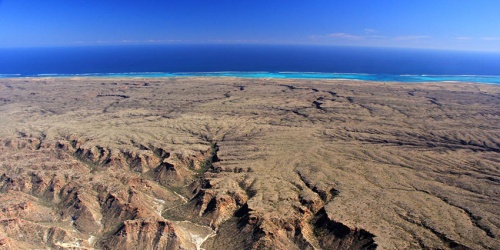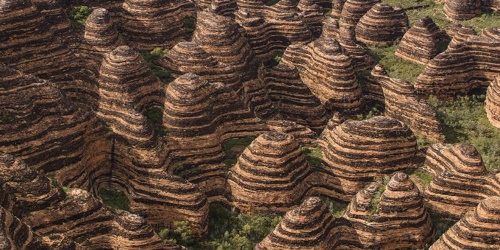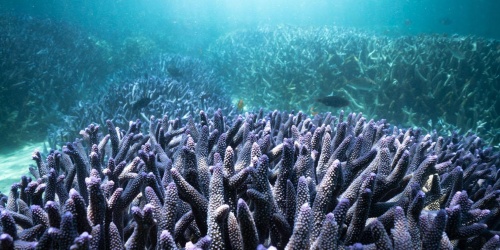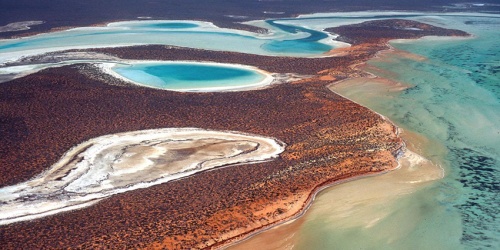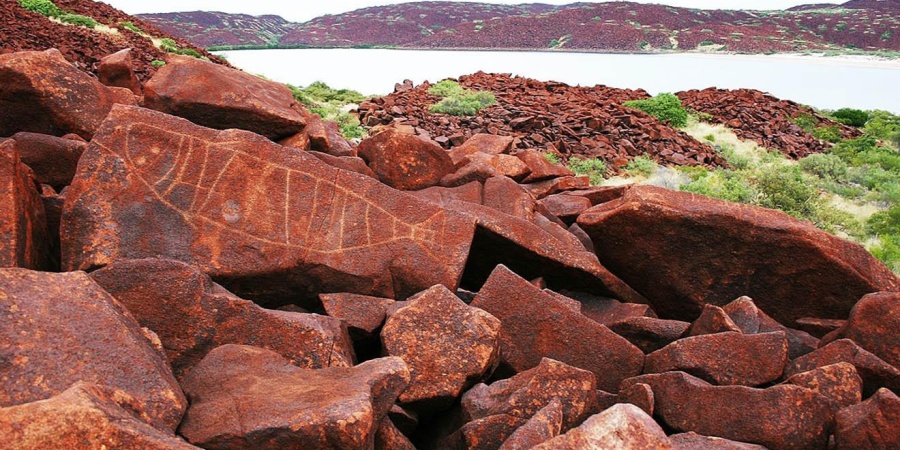
Proposed Murujuga World Heritage Area. Photo by Murujuga Aboriginal Corporation
Joint media release: Murujuga Cultural Landscape achieves World Heritage listing.
After more than 50,000 years of being carefully protected and managed by its Traditional Owners and Custodians, the Murujuga Cultural Landscape has been recognised for its Outstanding Universal Value on the World Heritage List.
The designation of World Heritage status was determined at the 47th session of the World Heritage Committee in Paris on Friday 11 July 2025.
It follows a tireless nomination process led by Murujuga Aboriginal Corporation on behalf of the Ngarda-Ngarli (Nar-da Nar-li), in partnership with the West Australian government and with full support of the Australian Government.
The Murujuga Cultural Landscape is located in the north-west of Western Australia and is of immense cultural and spiritual significance.
Murujuga represents continuous traditional culture and practice for at least 50,000 years.
It has the densest known concentration of petroglyphs anywhere in the world, with an estimated 1-2 million petroglyphs recorded in an area of more than 100,000 hectares, across the Murujuga Cultural Landscape.
News
- Joint media release: Murujuga Cultural Landscape achieves World Heritage listing July 2025
- Significant milestone for protection of Murujuga country 29 February 2024
- Joint media statement Towards World Heritage recognition for Murujuga 10 February 2023
- State Budget provides $11 million boost for Murujuga National Park 21 April 2022
- Murujuga World Heritage Nomination News November 2021
- Murujuga World Heritage Nomination News - February 2021
New boardwalk for popular Murujuga rock art site 26 August 2020 - World Heritage Tentative listing celebrated on-country 26 August 2020
- Murujuga World Heritage Nomination News June 2020
- Murujuga World Heritage listing one step closer 28 January 2020
- Progress made toward Murujuga World Heritage status 8 November 2019
- Land added to Murujuga National Park as plan to recognise ancient culture progresses 25 July 2019
What is the World Heritage List?
TThe World Heritage List is comprised of places with ‘Outstanding Universal Value’. This means that the cultural and/or natural heritage values of these places are ‘so exceptional as to transcend national boundaries’ and are ‘of common importance for present and future generations of all humanity’. There are currently 1248 sites on the UNESCO World Heritage List, including the Taj Mahal, Great Wall of China, Stonehenge and Grand Canyon National Park.
Murujuga Cultural Landscape is Australia’s 21st World Heritage site, joining the Great Barrier Reef, Sydney Opera House and Kakadu National Park. There are now five World Heritage Sites in Western Australia: Purnululu National Park, Shark Bay, and the Ningaloo Coast, which are listed for their natural values, the Fremantle Prison which is listed for its cultural value as part of a serial listing of the Australian Convict Sites, and now the Murujuga Cultural Landscape also for cultural values.
The Department of Biodiversity, Conservation and Attractions is responsible for the day-to-day management of Purnululu National Park, Shark Bay, and the Ningaloo Coast, while Murujuga Aboriginal Corporation and the department jointly manage the Murujuga Cultural Landscape.
Benefits of being placed on the World Heritage List
World Heritage Listing is the highest global recognition of the importance of a place. The status recognises the outstanding and exceptional features of the listed site.
World Heritage Listing also brings a commitment at local, state and national levels to protect and manage the property for present and future generations.
Inscription of a property on the World Heritage List can produce many benefits for nations and for local communities. World Heritage places can generate economic opportunities for the place and surrounding regions.
In Australia, World Heritage places are strongly promoted, and many have received increased tourist visitation. This has fostered new business and employment opportunities and economic benefits.
Why was Murujuga Cultural Landscape nominated?
Murujuga Cultural Landscape was nominated for inscription on the World Heritage List in recognition of its outstanding Aboriginal cultural value. Murujuga, meaning “hip bone sticking out” in the Ngarluma-Yaburara language, refers to Murujuga land and sea Country and consists of the Burrup Peninsula and 42 inshore islands.
Murujuga is a living cultural landscape shaped by the traditional practice of Lore by cultural custodians over thousands of generations, and the continuing stewardship of Ngarda-Ngarli today.
Murujuga Cultural Landscape is home to many tangible and intangible attributes which contribute to its extraordinary significance. It hosts one of the densest and most diverse collections of petroglyphs in the world. It is estimated to contain one to two million petroglyphs, which provide a record of traditional use of the area over thousands of years. The engravings depict human figures, bird, marine and animal life, including some extinct species. The area also features middens, fish traps, rock shelters, ceremonial places, spiritual and sacred sites, and stone arrangements. The rock art has deep meaning for Ngarda-Ngarli, providing a tangible link to stories, customs and knowledge of their land and resources, connecting them to the events and people of the past and their beliefs today.
The rock art of Murujuga has immense cultural, archaeological and spiritual significance and is an important part of Western Australia’s cultural heritage.
The environment and landscape at Murujuga has changed dramatically through time, including transformation from an inland range, far from the coast, to an archipelago. The Murujuga Cultural Landscape includes landscapes, seascapes and submerged landscapes, demonstrating unique continuity of management and adaptation of Law to transforming environments as the sea level rose.
Who prepared the nomination?
The nomination process was led by the Murujuga Aboriginal Corporation in partnership with the Western Australian Government, and in collaboration with the Australian Government and stakeholders. The leadership and cultural guidance of the Murujuga Aboriginal Corporation was central to this World Heritage nomination process, to ensure that it adequately articulated the meaning of Murujuga to the Traditional Owners, their connection to this Country and aspirations for it.
When was Murujuga Cultural Landscape nominated?
Murujuga was added to Australia’s World Heritage Tentative List in August 2020 pending preparation of a formal and more comprehensive nomination dossier. The formal World Heritage nomination was submitted to UNESCO in February 2023.
Who are Ngarda-Ngarli?
Ngarda-Ngarli is the collective term for the five Traditional Owner and Custodial groups of Murujuga, being Ngarluma, Yindjibarndi, Yaburara, Mardudhunera and Wong-Goo-Tt-Oo, who have been part of this cultural landscape for tens of thousands of years and have a deep and spiritual connection to it.
Before European occupation of Murujuga in the 1860s, Ngarda-Ngarli were living in their own traditional lands. Many groups travelled to Murujuga for trade, marriage, kinship and to use the resources offered by the land. Following the devastating events of colonisation, Traditional Owners at Murujuga were supported by surrounding groups to care for this sacred and important Ngurra (Country).
What is the Murujuga Aboriginal Corporation?
Murujuga Aboriginal Corporation, , which represents the Traditional Owner groups, was established in 2006 as approved body corporate for the Burrup and Maitland Industrial Estates Agreement (BMIEA). Today the Murujuga Aboriginal Corporation administers the implementation of contractual obligations of the BMIEA. Under this agreement, the three contracting parties surrendered their native title rights and acquired freehold title and joint management of the Murujuga National Park.
MAC’s objectives are to protect and manage Murujuga land and sea country, and to support its approximately 1200 members and broader community. MAC is governed by a Board of Directors and guided by the Murujuga Circle of Elders.
How is the rock art of Murujuga Cultural Landscape being protected from industrial air emissions?
The Western Australian Government is strongly committed to ensuring that there is a strategy to guide the long-term management and monitoring to protect rock art of Murujuga from the impacts of human-casued emissions. The Murujuga Rock Art Strategy, released on 15 February 2019, provides a framework for the Western Australian Government, in partnership with the Murujuga Aboriginal Corporation, to independently monitor, analyse, and address any impacts to rock art from emissions. The Department of Water and Environmental Regulation has primary responsibility for the day-to-day implementation of the Murujuga Rock Art Strategy on behalf of the Western Australian Government.
The Western Australian Minister for Environment has established the Murujuga Rock Art Stakeholder Reference Group to facilitate engagement between the Murujuga Aboriginal Corporation and key government, industry and community representatives on the development and implementation of the Murujuga Rock Art Strategy.
The World Heritage nomination for Murujuga includes a comprehensive and effective management framework outlining how the potential ‘Outstanding Universal Value’ of the area will be protected, conserved and monitored through the Western Australian Government and the Murujuga Aboriginal Corporation working closely together to protect the rock art through the Murujuga Rock Art Strategy and Murujuga Rock Art Monitoring Program.
How was the proposed Murujuga Cultural Landscape World Heritage boundary determined?
The World Heritage nomination includes significant areas of Murujuga that have a management framework in place to adequately conserve and protect its potential World Heritage value. The boundary and size of the proposed Murujuga World Heritage area was determined following effective and comprehensive stakeholder consultation and assessment of the area.
How is the Murujuga Cultural Landscape World Heritage property managed?
World Heritage properties are required to have an effective protection and management system to protect their World Heritage values. The existing national, State and local laws and regulations in place for Murujuga will remain and continue to guide management and decision making in the area. World Heritage Listing will not in itself change:
- ownership of land
- the way land and waters are managed, including the joint management arrangements for the Murujuga National Park
- existing land uses and activities, including the ability for Ngarda-Ngarli to undertake Customary Activities
- people’s ability to enjoy the range of recreational activities available around Murujuga, or via commercial tour operations.
Is development allowed in World Heritage areas?
Yes. Development and commercial activities can and do occur in World Heritage places around the world. In Australia, there are many examples: commercial fishing in Shark Bay World Heritage area; agriculture in Willandra Lakes World Heritage area; and extensive tourism infrastructure in the Great Barrier Reef and Wet Tropics of Queensland World Heritage areas.
World Heritage Listing will not affect development as long as there are no significant impacts on the World Heritage values. Australian governments of all levels must ensure that the ‘Outstanding Universal Value' of the area are protected and managed for existing and future generations.
Existing and future industrial developments of Murujuga are covered by existing State and Commonwealth environmental protection legislation and will continue to be assessed under these on a case-by-case basis and taking into account cumulative emissions. With appropriate management, the Western Australian Government considers that industry and tourism can successfully co-exist with the cultural heritage and environmental values of Murujuga.
Can I still fish, camp, swim and four-wheel drive in the Murujuga area?
Yes. People will be able to continue enjoying the range of recreational activities available in the Murujuga area if Murujuga is included in World Heritage List. For example, visitors and locals will still be able to go fishing, camping, swimming, mountain-biking and four-wheel driving. Recreation activities will continue to be managed under existing Western Australian and local government laws. World Heritage Listing will not in itself change the way land and waters are managed or existing land uses and activities. World Heritage Listing does create an obligation on governments to continue to protect the values of the area.
